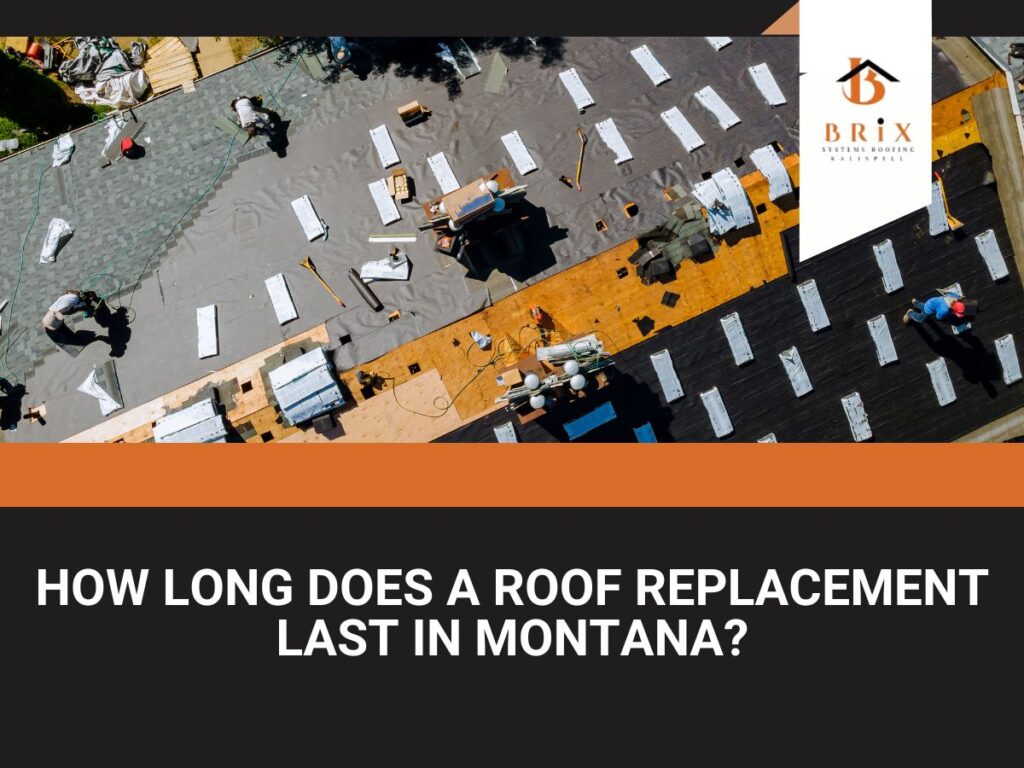
How long does a roof replacement last in Montana? If this is your constant curiosity, we have the answer. Here at Brix Systems, we have provided the residents of Kalispell, Montana, with roof repair and replacement services for nearly ten years.
Our high-quality workmanship ensures you get a roof that gives you peace of mind. In the article, we’ll discuss the life expectancy of different roofs, factors that impact roofs' lifespan, and ways to ensure roofs last longer.
A roof's lifespan typically depends on the type of roof, the climate in which it is installed, and how well it is maintained. Generally, a typical asphalt shingle roof can last anywhere from 15-30 years.
Warranties for roofing products will vary depending on the manufacturer, but most typically cover the length of the roof's expected lifespan and can even exceed it sometimes. For example, a 30-year shingle roof may be covered by a warranty for up to 50 years. This is called a manufacturer’s warranty, and it covers the material only. A roofing company will have a different warranty, which covers against leaks and any defects that may occur during the installation, usually ten years.
The roof's expected lifespan is longer than the roofing company's warranty and is usually on par with the manufacturer's material warranty.
| Material | Lifespan |
| Three-Tab Asphalt Shingles | 15-20 years |
| Metal Roofs | 40-70 years |
| Clay or Concrete Tile | 50-100 years (Underlayment might have to be changed ) |
| Slate Roofs | 100-200 years |
| Wood Shingles | 30-50 years |
| Architectural Asphalt Shingles | 30-50 years |
| Composite Shingles | 25-50 years |
Before purchasing a roof in Kalispell, it’s important to know if it’s the Best Roof for Montana Weather. Montana weather can be unpredictable and harsh, so it is important to choose a roof that can withstand the elements.
Ultimately, the best roof for Montana weather will depend on your needs, budget, and preferences.
This type of roof is one of the most inexpensive types of roofing material. Three-tab asphalt shingles are made of asphalt-saturated organic felt with a layer of asphalt, topped with ceramic granules that help protect against UV rays.
The shingles are easy to install and come in a variety of colors. Generally, you can expect a life expectancy of 15-20 years.
Although metal roofs are more expensive up front, they outlast asphalt shingles by a long shot. Depending on the type of metal used, you can expect a life expectancy of 40-70 years.
They are also fire, wind, and hail-resistant, which makes them a great choice in areas prone to severe weather. Metal roofs also have the advantage of being lightweight and reflective, resulting in lower energy bills.
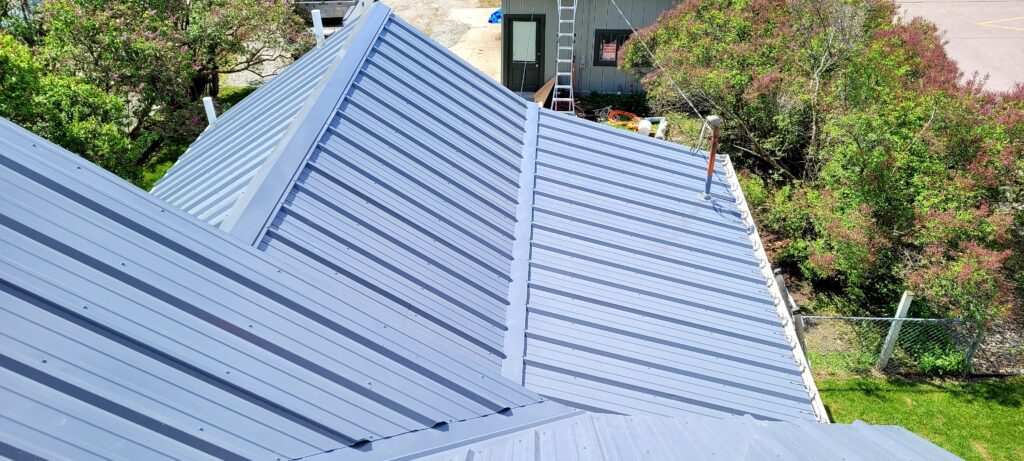
If you're looking for a tile that will last for a long time, clay and concrete are excellent choices. Clay and concrete tiles can last up to 50-100 years with proper maintenance and care. But the underlayment needs to be changed every 25 years or so. A tile roof replacement or underlayment replacement will last 25 years.
Clay tiles are more fired and less porous, making them resistant to water damage and staining. Concrete tiles are more durable and can be customized with various colors and shapes. Both types of tiles provide excellent insulation and are perfect for areas with high moisture levels.
Slate roofs are known for their extreme durability and long life expectancy. These roofs can last up to 100-200 years with proper maintenance and care.
They are also aesthetically pleasing, with a natural look. The downside is that they are heavy and expensive. Installation and repair can also be costly and complicated.
Wood shingles have a classic look and can last up to 30-50 years. They are also relatively inexpensive and can be found in various styles and colors.
However, they are not as durable as other materials and require more maintenance. They are also prone to rotting, warping, and cracking due to moisture.
Architectural asphalt shingles are a great alternative to traditional asphalt shingles. They are thicker and more durable than regular shingles and can last up to 30-50 years.
In addition, they are available in a wide range of designs and colors, making them a fantastic option for anyone seeking to give their house a unique feel and look. The downside is that they are more expensive than traditional shingles.
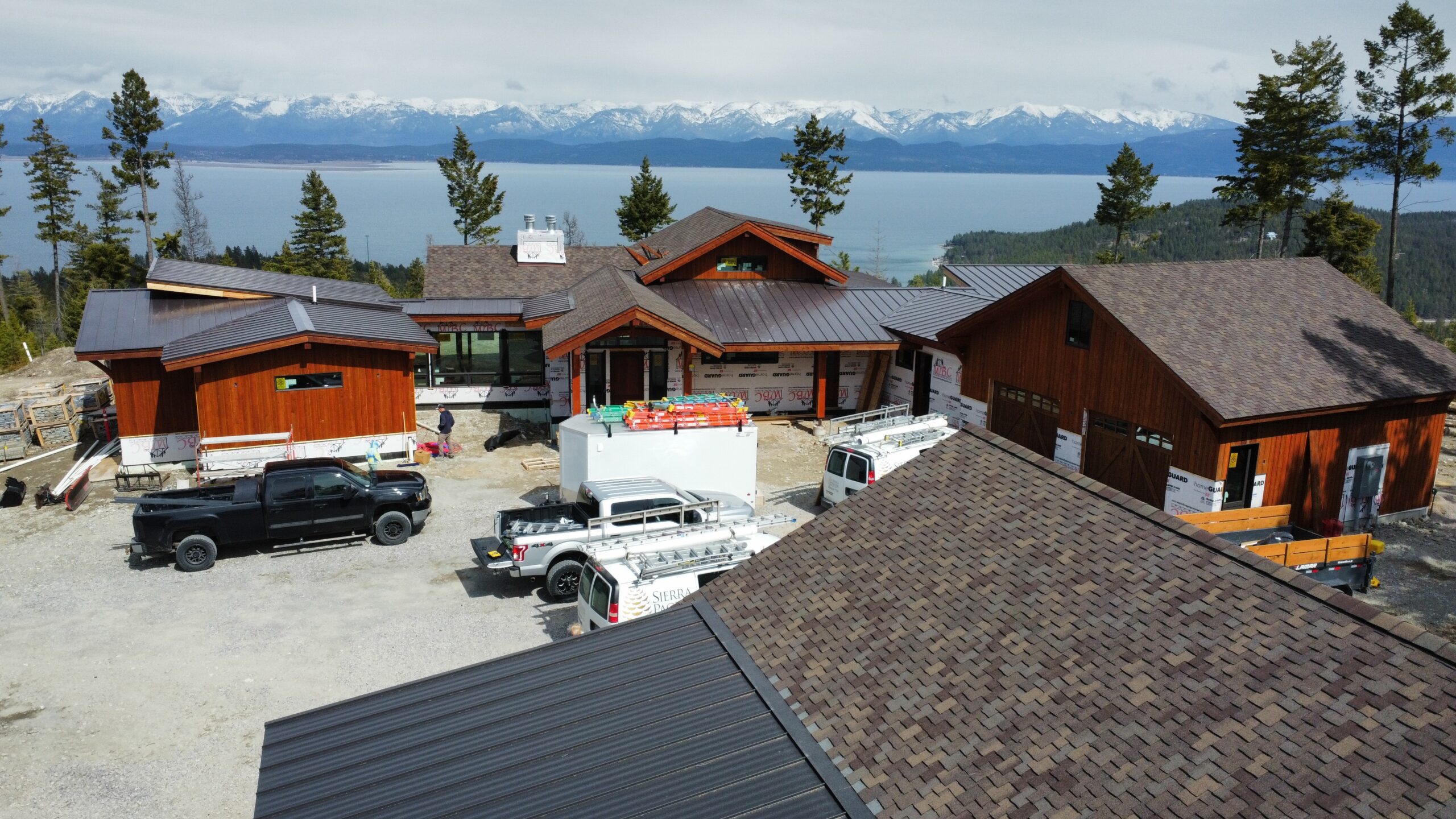
Composite shingles are a blend of asphalt and rubber materials, making them more durable and long-lasting than traditional shingles.
They have a 25–50 years lifespan and can be bought in a wide range of colors and designs. The cost may also be higher than that of regular shingles.
| Materials | Lifespan |
| EPDM | Commercial: 20-30 years Flat: 10-20 years |
| TPO | Commercial: 10-20 years Flat: 10-20 years |
| PVC | Commercial: 30-50 years Flat: 20-30 years |
| BUR | Commercial: 20-30 years Flat: 15-20 years |
This is a synthetic rubber roofing membrane used on roofs. It is one of the most popular and cost-effective flat roofing solutions available today. It is resistant to ultraviolet rays, ozone, and extreme temperatures.
It is also resistant to most chemicals, making it an excellent choice for commercial buildings and other industrial applications. It typically comes in large sheets that can be cut to fit the shape of any roof. EPDM is usually installed with adhesives or mechanical fasteners.
This type of roofing is a single-ply membrane made of a synthetic rubber-like material. It is a common choice for commercial and residential roofing because of its durability and longevity.
It is also energy-efficient, reflecting most of the sun's UV rays, which can help reduce cooling costs.
This type of roofing is made from a polyvinyl chloride material that is highly durable and resistant to harsh weather conditions. It is energy-efficient, reflecting most of the sun's UV rays, which can help reduce cooling costs.
It is also easy to install and maintain, making it a popular choice for both commercial and residential roofing applications.
This type of roofing is a combination of asphalt and tar that is applied in multiple layers. It is highly durable and resistant to extreme weather conditions, making it an ideal choice for low-slope roofs. It also has excellent fire resistance, making it a popular choice for commercial buildings.
It's common knowledge that roofs don't all have the same useful lifespan. Unfortunately, most homeowners have no idea what factors contribute to a roof's longevity or what they can do to prolong the life of their roof.
Here are the top five factors that will determine the lifespan of your roof.
Increasing the life expectancy of your roof requires regular maintenance. This includes cleaning the roof, inspecting for damage, and making necessary repairs.
It's also important to keep the roof in good condition by cleaning the gutters, trimming trees, and removing debris. Applying a new roof coating every five to 10 years can also help protect the roof from the elements.
After a storm or if you live in a region that receives a lot of snow, cleaning your roof is essential. Extending the life of your roof by removing dirt, debris, and moss that has gathered through frequent cleaning is possible.
You should also check your roof for any signs of damage, such as missing shingles, loose nails, or cracked tiles. If you notice any of these issues, it's important to have them repaired right away to avoid further damage.
Regularly inspect your roof for any signs of damage, such as missing shingles, cracked tiles, or loose nails. Fixing any damage can help prevent further damage and extend the life of your roof.
Proper ventilation is key for a long-lasting roof. Make sure your roof has adequate ventilation to prevent moisture buildup and damage.
Check to see if vents are located in the soffit and the roof ridge. Make sure the vents are free of debris. If there are no vents, consider adding some to increase airflow and reduce moisture buildup.
A roof coating is a liquid-applied product that can help protect your roof from UV rays, moisture, and extreme temperatures. It also protects your roof from wear and tear caused by weather, such as hail and wind.
A roof coating also helps to reduce energy costs by reflecting the sun's heat and keeping your building cooler. It can also increase the life of your roof, preventing costly repairs and replacements.
Damaged, worn, or missing shingles can lead to leaks, damage to the underlying roof structure, and a shorter life expectancy. If your shingles are damaged, repair or replace them right away to help prolong the life of your roof.
To repair, you will need to remove the damaged shingles and replace them with new ones that match the existing ones. If the shingles are too damaged to repair, it is best to replace them. Use the proper fasteners and adhesive to guarantee the shingles are installed correctly.
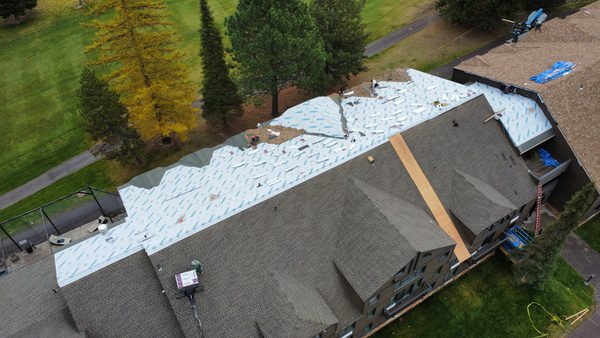
The average roof should be replaced every 20-25 years. However, depending on the roofing material and local climate conditions, it may need to be replaced sooner. Roofing tiles may not hold up well in areas with more severe weather than in areas with milder climates. Regular inspections and maintenance can also help extend the lifespan of a roof.
If you reside in an area prone to frequent and intense storms, you may want to consider getting a new roof sooner rather than later. Other factors that can affect a roof's lifespan include poor installation, poor ventilation, sloping, the quality of the roofing materials, and lack of maintenance.
These factors can be checked by yourself or with the assistance of an expert. A qualified roofer may go over your roof and give you an estimate of its remaining lifespan. They can also advise you on whether or not you should replace your roof.
If you decide to replace your roof, a roofing contractor can help you choose the right roofing materials and install the roof on your home. If you're unsure if your roof needs to be replaced, you can contact Brix Systems for a free roof inspection. We’ll be able to tell you if your roof needs to be repaired or replaced and how much it will cost.
Our team at Brix systems can help you increase the lifespan of your roof by providing you with regular maintenance services. Our maintenance services include inspecting the roofing system, sealing any gaps or cracks, cleaning the roof and gutters, and repairing any damages.
We also offer preventive maintenance services such as coating the roof with a water repellent and applying sealants to extend the roof's life. By regularly maintaining your roof, you will be able to prevent major repairs and replacements, increasing the longevity of your roof.
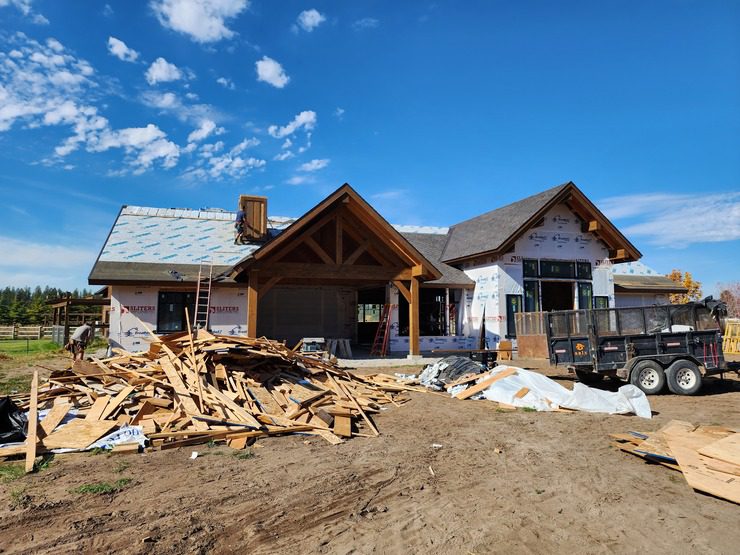
At Brix Systems, we are proud to offer the best roof replacement and repair services for the Kalispell, Montana area. Our team of experienced roofers is knowledgeable in all areas of roof installation, repair, and maintenance and can help you achieve the results you're looking for.
Our crew is ready to assist you with any roofing needs you may have, including the installation of a brand-new roof, the repair of an existing roof, or even just routine maintenance. We offer free estimates and consultations to ensure you get the best roofing services. Contact us today to get started on your roofing project!